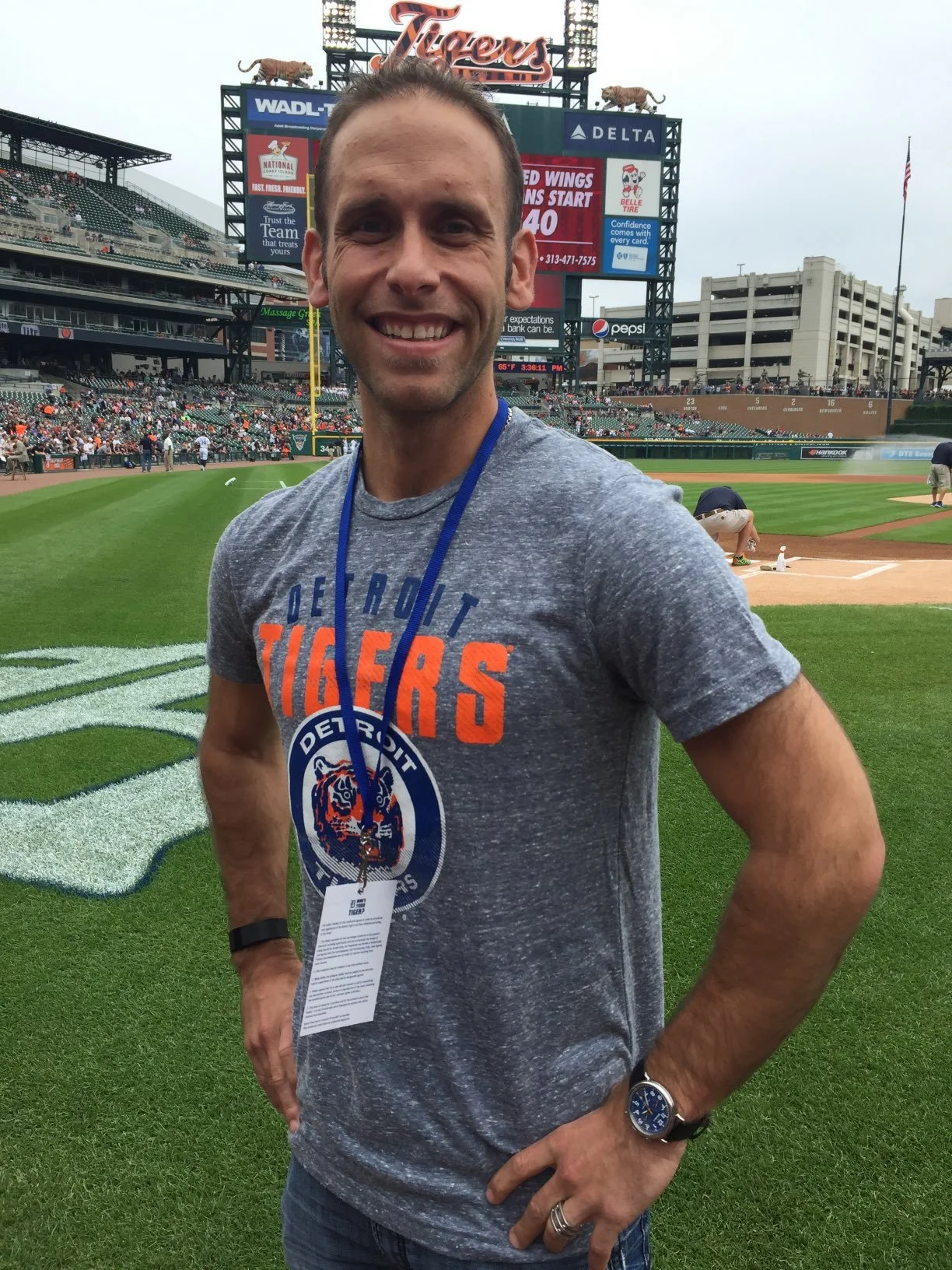Seth Gold
You know, every fan has that one place that feels like home, and for Detroiters, it’s Comerica Park. I talked with Seth Gold—whose family has deep roots just blocks from old Tiger Stadium—about what it means to carry that fandom forward. He remembers Magglio’s homer like it was yesterday, the roar of the crowd, the statue of Kaline watching over the outfield. For Seth, the Old English D isn’t just a logo—it’s the heartbeat of Detroit. The ride, the emotion, the history—it’s all still alive every time he walks through those giant tiger-guarded gates.
How would you describe your Detroit Tigers fandom? Where did it come from?
Being born in 1981, the earliest memories I have are of the ’84 Tigers and what that meant for the city. My family history is tied to that area—my great-grandfather started a pawn shop a half-mile from Tiger Stadium. My dad always talked about those days, especially the ’84 World Series. You can’t talk Tigers baseball without thinking about that year.
Baseball’s always been called America’s pastime. How does it bring families together?
Growing up in Detroit, we’re fanatics—Pistons, Lions, Tigers, Red Wings. Going down to the ballpark, sitting there for hours with no clock running, just hanging out, grabbing hot dogs, that’s a family experience.
You grew up hearing about Tiger Stadium from your grandfather and great-grandfather. Now you’re taking your own kids to Comerica Park. What’s it like to pass that torch?
Tremendous. The Old English D represents the city—it’s everywhere. Walking into Comerica Park, seeing that logo, watching the players—it’s special. I remember watching Cecil Fielder as a kid and later his son. Your fandom is tied to emotion: the highs, the lows, the ride. My dad passed that passion to me, and now I get to pass it on to my kids.
Let’s talk about the 2000s Tigers—Cabrera, Verlander, Scherzer. What was that run like at Comerica?
Incredible. I just watched Magglio Ordoñez’s homer that sent us to the ’06 World Series—almost twenty years ago, but it feels like yesterday. The city was electric. Even though we didn’t win it all, the excitement was pure Detroit. We had good years, bad years, and now they’re surging again. That’s what sports do—they resurrect themselves.
Comerica Park has those huge tiger statues, the merry-go-round, the bars and restaurants nearby. What’s it like for a fan coming to the park?
Comerica anchored downtown. It became the center of Detroit’s entertainment district. You’ve got Ford Field, Little Caesars Arena—it all grew around the ballpark. The design is so intentional: tigers with baseballs in their mouths, statues, plaques. You feel like you’re walking into Tiger Stadium again. Comerica has its own name, but it’s still the home of the Tigers—everything’s themed that way.
How much of Tiger Stadium’s spirit do you feel inside Comerica?
A lot. Tiger Stadium had those double decks and that intimate feeling. Comerica brings that nostalgia forward—with statues of Al Kaline and Ernie Harwell, plaques for Ty Cobb, and nods to the city’s history. It’s a different location, but the same heartbeat.
How do you describe the baseball vibe in Detroit?
It’s emotional. You ride the highs and lows. We’re a working-man’s city—we stick with our teams. Every spring, there’s that feeling: “What are we going to do this year?” You talk about those first 40 games, how they set the tone. Detroiters are loyal, through and through.
What’s it like bringing your family to a game now?
It’s great for all ages. You’ve got the merry-go-round, the carousel with all tigers, tons of food. They’ve upgraded seating, added family areas—it’s an amazing environment. Whether you’re in the suite or in the stands, it’s a great view, great vibe.
Where should fans grab a bite before a game?
You’ve got to hit American Coney Island—Detroit’s famous hot dog with chili. Check out Hockeytown Café, and just walk down Woodward. The city’s alive. If you’re doing a ballpark tour, Comerica’s a must-stop—it’s pure Detroit energy.
~~~
More from Seth Gold
NOTE: The above was edited for clarity and length.
You can read the full transcript here.

